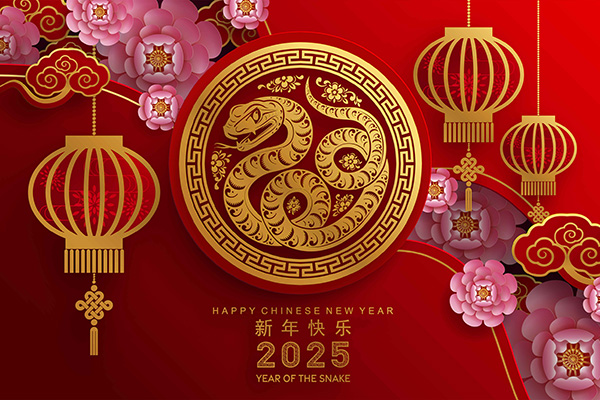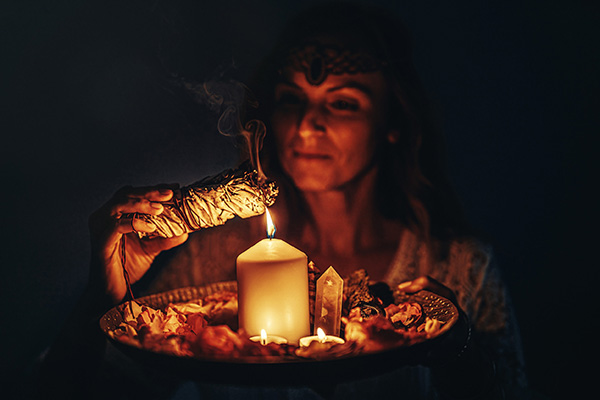spiritual traditions
Prayer Is A Refuge From The Noise And Chaos
 It is easy to feel overwhelmed these days. Modern life presents many challenges, from personal struggles to global issues.
It is easy to feel overwhelmed these days. Modern life presents many challenges, from personal struggles to global issues.
We live in a world increasingly dominated by negativity, division and fear, where cruelty and hatred are not only considered acceptable, but even celebrated.
It’s really no secret to the spiritually aware person that there is an increasing battle between good and evil. Negative influences often masquerade as appealing or trendy, making it even more important to stay connected to your inner truth and divine guidance.
I often have to turn off my cell phone and television these days as I see the forces of evil growing stronger than ever. It can be hard to stay grounded in hope and clarity.
Fortunately, we have access to a variety of spiritual practices to help us stay grounded, find clarity, and maintain our inner balance. My favorite is a powerful, time-honored tradition: prayer.
While prayer is practiced in many religions and spiritual traditions, it is universal and can be embraced by anyone, regardless of their belief system. It transcends cultural and religious boundaries and is not tied to any dogma or required ritual.
Traditionally, religious prayer follows specific doctrines, but prayer is an open practice available to anyone to contemplate and express their deepest thoughts, feelings, and desires in a mindful, empowering way.
Astrology Forecast January 27 – February 2, 2025
 The week begins with Mercury entering innovative Aquarius, sparking fresh ideas and out-of-the-box thinking. Communication takes a forward-thinking turn, making this a prime time for brainstorming, problem solving, and embracing new perspectives in both work and business.
The week begins with Mercury entering innovative Aquarius, sparking fresh ideas and out-of-the-box thinking. Communication takes a forward-thinking turn, making this a prime time for brainstorming, problem solving, and embracing new perspectives in both work and business.
Over the next two weeks, a strong pull to connect with like-minded individuals will encourage you to explore intellectual pursuits that challenge traditional norms. Let your curiosity lead you into uncharted mental territory where unique insights and creative solutions await.
Conversations are likely to be lively, witty, and full of originality. But beware of jumping to conclusions or appearing aloof – a balance of logic and diplomacy will smooth both professional and social interactions.
Wednesday marks the Chinese New Year, ushering in the Year of the Snake, an ancient symbol of intelligence, intuition, and charm.
The Year of the Snake repeats itself every 12 years, and people born under this sign are known for their wisdom, resourcefulness, and quiet determination.
The element associated with each Snake year adds nuance to its influence. In 2025, the Wood Snake brings a dynamic blend of growth, creativity and flexibility, enhancing the traditional Snake traits of patience, insight and strategy.
The energy of the Snake makes 2025 a year in which success comes to those who move with calm deliberation rather than haste. Trust your instincts, follow your inner voice, and make thoughtful decisions, especially when it comes to finances, relationships, and career paths.
The Ancient Spiritual Tradition Of Smudging
 Just as our physical environment can become cluttered and unclean, our aura or energy field also accumulates stagnant and negative energy.
Just as our physical environment can become cluttered and unclean, our aura or energy field also accumulates stagnant and negative energy.
Regularly cleaning our homes and workplaces promotes health, hygiene and optimal function — and the same principle applies to our personal and spiritual energy. Clearing our energy field and environment helps to release negativity and toxic emotions, stress and anxiety, and promotes a sense of calm, clarity and balance.
Energy cleansing is essential for removing blockages that may be hindering personal and spiritual growth or disrupting your connection to spirit and the divine. Over time, lingering negative or toxic energy can even manifest as mental health issues, spiritual disconnection and even physical ailments.
By maintaining a regular practice of energy cleansing, you create a positive, harmonious flow of energy that supports overall health and well-being. In addition, a clear energy field sharpens your intuition and inner guidance, making it easier to align with your higher self and make decisions that are aligned with your greatest good.
Smudging is also a powerful way to clear negative energy attachments and banish malevolent spirit entities.
One of the most time-tested and effective methods of clearing unwanted energy is smudging, or smoke cleansing — an ancient purification ritual steeped in history and practiced by various cultures, religions, and spiritual traditions around the world.
Abundance Rituals For A Prosperous 2025
 The universal energy of renewal and infinite possibility beckons as we enter the year 2025. The beginning of a new year is a great time to release old energies that no longer serve us and to invite a new wave of abundance, prosperity and fulfillment into our lives.
The universal energy of renewal and infinite possibility beckons as we enter the year 2025. The beginning of a new year is a great time to release old energies that no longer serve us and to invite a new wave of abundance, prosperity and fulfillment into our lives.
New Year’s manifestation practices not only clarify and align our intentions from the start, but also release energetic blockages, allowing prosperity and well-being to flourish. Releasing the old creates space for new possibilities and opportunities to flow into our lives.
The modern idea of setting intentions or “New Year’s resolutions” has its roots in various traditions. For centuries, cultures around the world have marked the transition to a new year with spiritual, esoteric, and religious practices and ceremonies.
In Mesopotamia, for example, the Akitu festival celebrated the Spring Equinox as the beginning of a new year and included rituals to honor the gods and ensure a bountiful harvest.
In Babylonia, at the beginning of each year, people made promises to their deities to return borrowed items and pay their debts. These promises were a way to start the year fresh and in good standing with the higher realms.
The ancient Romans perpetuated the tradition by dedicating the month of January to Janus, the two-faced god who looked both backward and forward to symbolize “looking back” on the past year and “looking forward” to the New Year, making it a time for personal reflection and new beginnings.
The Mystical Purpose Of Daydreaming
 In school, I was often reprimanded for daydreaming. My eyes would glaze over as I gazed into the distance, lost in a magical world of my own.
In school, I was often reprimanded for daydreaming. My eyes would glaze over as I gazed into the distance, lost in a magical world of my own.
It amused the other children in the class and clearly frustrated my teachers, who mistook it for inattention or laziness, but even then I intuitively knew there was something valuable in my moments of mental wandering.
Little did I know that my frequent daydreaming opened doors not only to creativity and problem-solving, but also to spiritual connection, higher consciousness, and most importantly, manifestation.
Research has shown that daydreamers actually experience increased brain activity. Contrary to the common misconception that daydreaming equals a blank or stagnant mind, studies show that when we allow our minds to wander, we engage the problem-solving and creative areas of the brain.
Neurologically speaking, daydreaming activates the default mode network (DMN), a system in the brain that lights up when we are not focused on external tasks. The DMN connects us to deeper thoughts, memories, and emotions, often leading to sudden insights or realizations.
But what science describes as a purely neurological phenomenon is, in spirituality and metaphysics, a gateway to the higher self and beyond. When the mind wanders aimlessly, we enter an intermediate mental space — a threshold between the conscious and the subconscious. This is where creativity, intuition, psychic impressions, and spiritual connection are most accessible while awake.
End Your Day With A Restorative Evening Ritual
 How we end our days is just as important as how we begin them. Yet this time of the day is often overlooked as an opportunity to promote our personal and spiritual well-being.
How we end our days is just as important as how we begin them. Yet this time of the day is often overlooked as an opportunity to promote our personal and spiritual well-being.
Especially when navigating stressful situations or busy schedules, being intentional about how we transition into rest can significantly improve the quality and restorative nature of our downtime.
Creating a simple, personalized nighttime routine allows us to check in with ourselves and make sure we’re taking care of our mind, body, and spirit. It helps relieve the stress of the day and sets the tone for a restful night’s sleep.
There are countless ways to create an evening ritual or routine that resonates with your spirit. The important thing is that your practice feels authentic and meets your needs. It only takes a few simple steps to create a daily practice that helps us release the stress of the day.
Whatever practice you choose, make sure it works with your schedule and is relaxing, rather than feeling like it creates more daily tasks to complete.
Choose activities that help you relax and that you look forward to. Whether it’s journaling, listening to soothing music, or lighting a candle, choose activities that help you intentionally transition from the busyness of the day to the calm of the night.
Many people complain that they don’t have enough time in their day. For them, a daily spiritual routine is a frivolous luxury they cannot afford to waste time on, yet these same people often spend hours each night binge-watching television or endlessly scrolling through their phones. This modern paradox highlights how easily we prioritize mindless distractions over meaningful self-care. By consciously reclaiming even a fraction of this time, we can nurture our spiritual well-being every evening in a way that renews our body, mind, and spirit far more effectively.
Reclaim Your Peace And Power With Healthy Boundaries
 Saying “no” is one of the most powerful things we can do to maintain our personal and spiritual well-being and energetic balance.
Saying “no” is one of the most powerful things we can do to maintain our personal and spiritual well-being and energetic balance.
Many of us are caught up in the daily whirlwind of commitments, expectations, and the constant need to meet the demands of others. For those on a spiritual or esoteric path, this can be especially challenging.
The desire to be compassionate and supportive can sometimes blur the lines between compassion and self-neglect. However, one of the most profound spiritual lessons is this: it is okay to say no. In fact, it is imperative!
Knowing when and how to say no is a critical self-care skill that allows you to set healthy boundaries and protect your time, energy, and mental health. Moreover, it is crucial for our spiritual growth and essential for living a life filled with purpose and fulfillment.
Saying no and standing your ground requires recognizing your inherent worth and honoring your personal limits. Too often we stretch ourselves too thin, trying to be all things to all people. This may come from a fear of disappointing others or a belief that our value is in how much we give. Many of us also feel spiritually obligated to be there for others, often because we are so deeply affected by all the struggles and suffering we see in the world around us.
However, when we put the needs of others ahead of our own without balance, we risk depleting our physical, emotional, and spiritual energy. In such a depleted state, we are of no use to anyone.